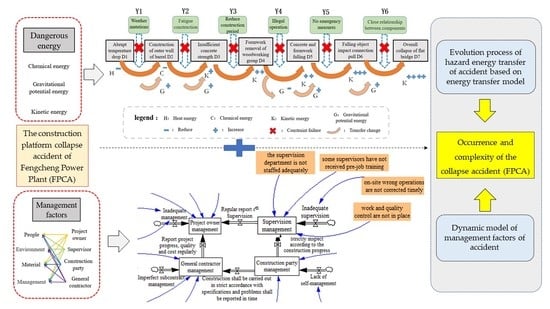Safety Risk Estimation of Construction Project Based on Energy Transfer Model and System Dynamics: A Case Study of Collapse Accident in China
Abstract
1. Introduction
2. Materials and Methods
2.1. Context
2.2. Hybrid Approach Designed for the Accident Analysis
3. Collapse Accident Analysis of the Construction Platform Based on the ETM
3.1. Identification and Analysis of Hazardous Energy
3.2. Analysis of Changes in the Energy Transfer
- The natural heat energy affected the release of chemical energy on the outer wall of the cylinder, owing to the abrupt temperature drop (Y1: weather constraint failure).
- The amount of the stored energy increased rapidly and the energy transformed into the kinetic energy of concrete, owing to the construction of the outer wall of the cylinder (Y2: construction constraints failure) and the gravitational potential energy of the outer wall and the formwork itself.
- Based on this kinetic energy, owing to the carpentry group’s illegal mold removal (Y3: time limit constraint failure) and the scaffold’s gravitational potential energy, the kinetic energy continued to increase substantially.
- At the same time, the removal of the supporting formwork was out of order (Y4: operation management failure). The elastic potential energy of the supporting formwork was relieved, which further weakened the resistance to the gravitational potential energy of the concrete outer wall.
- The concrete wall began to collapse with gravitational potential energy rapidly transforming into dynamic potential energy. Then, more objects, such as attached formworks, fell (Y5: measure constraint failure).
- Finally, owing to the close connection between components of construction platform and the cylinder wall (Y6: connection constraint failure), falling objects impacted the construction platform. Connected lasso rods of the flat bridge were also damaged, thereby causing the tragic collapse, with the gravity of potential energy transforming into kinetic energy.
4. Analysis of the Accident Management Factors Based on the SD Theory
4.1. The Causal Loop Diagram of Management Factors in the Collapse Accident
4.2. The System Dynamic Model of the Management Factor System for Safety Risk Estimation
- From the construction party (sub-contractor) perspective, wrong construction, low production efficiency, low level of education of the operators, and lack of professional training for the job resulted in the weak safety awareness of the operators, which was not in accord with construction standards. Construction quality plummets did not follow standard procedures, and the pursuit of cost and time limits led to the labor construction team’s numb construction experience, thereby resulting in the lack of self-management of the construction site. Relatively shallow qualifications and insufficient experience in construction units led to imperfect emergency plans and special plans for dangerous and large projects, as well as a nonstandard examination and approval system, which led to imperfect production safety management mechanisms. The blind pursuit of construction costs, inadequate supervision of the construction team, and poor project quality led to imperfect project department management.
- From the point of view of the general contractor, poor work deployment and lack of regular production inspection led to imperfect subcontracting management. Failure to properly manage the relationship between safety and development, insufficient attention to safety risks, ineffective supervision and rectification, mere formality, and failure to establish and perfect a matching management system led to the poor management of the general contractor.
- From the supervisor’s point of view, there was a failure to correct the wrong operation on-site in time. The supervisor’s supervision was insufficient. The supervision department was not equipped with sufficient personnel, some supervisors have not received induction training, and work and quality control standards were not in place, thereby resulting in insufficient supervisor management.
- From the perspective of the project owner, the supervision and inspection were not in place, the process was imperfect, and quality detection was not in place, thereby leading to mismanagement. The contract, signing of the project contracting unit, inspection of the permit to start the work, and qualification examination of the construction unit, failed to coordinate the quality, progress, and cost of the project. The unclear distribution of responsibilities among all parties led to the lack of management of the construction party.
- From the perspective of the overall system, the construction unit lacked self-management, did not strictly follow construction standards, and did not report to the general contractor and the supervision unit in time. The supervision unit did not strictly control the construction progress and quality, thus leading to a serious deficiency in the management of the general contractor and the supervision unit. The general contractor failed to report the progress of the project, quality, and cost to the project owner unit regularly. Moreover, the supervision unit failed to report regular supervision of the construction unit to the construction unit, ultimately leading to a serious deficiency in the management of the project owner unit.
5. Results and Discussion
5.1. Safety Risk Estimation of Construction Project from the Perspective of Technology
5.2. Accident Network from the Perspective of Management
- Based on the analysis results, it suggests that the management factor was the key node that led to the accident in the accident management factor SD model. Owing to the lack of the management experience of the project owner, the supervisor, the general contractor, the construction contractor, and other participants, the slogan “100 days of construction” was presented to reduce the construction time. To meet the requirements of the claimed construction time, the construction party disassembled the molds in violation of regulations, thereby resulting in the occurrence of risk events, such as insufficient concrete strength and disassembled molds.
- After the adjustment of the construction period, no construction party has demonstrated and evaluated the shortened construction period. Thus, neither corresponding construction organization measure nor security measure has been put forward. In this case, the subsequent construction activities and construction process management were conducted under an invalid construction plan. Further, ignorance of measures on sudden drops in air temperature and unsupervised construction activities contributed to the accident.
- The construction contractor (i.e., sub-contractor) was the object that should have received attention during the construction, the key node in the accident-related network, and the key activity that corresponded to the generation and transfer of dangerous energy. The corresponding management countermeasures focused on the management and control of this link, which could reduce the connectivity of the accident-related network, could effectively reduce the efficiency of accident transmission, and so could reduce the probability and severity of such engineering accidents.
- The quality of the workforce is another key management factor of the FPCA. In this project, to reduce the management cost of permanent worker groups, the labor subcontractor illegally lent the qualification and recruited many social natural persons as a labor force, without actual management. Only a small number of professional construction technical personnel had been arranged. The professional quality of the working group was low, and efficient management was difficult. Before the accident, the surface concrete solidified but did not reached sufficient strength. However, under the order to remove the supporting formwork, workers without construction experience executed it, and then the accident happened.
5.3. Management Implications Based on the Hybrid Accident Analysis Approach
6. Conclusions
Author Contributions
Funding
Institutional Review Board Statement
Informed Consent Statement
Data Availability Statement
Acknowledgments
Conflicts of Interest
References
- Gong, P.; Guo, S.; Xiong, C. A real-time control approach based on intelligent video surveillance for violations by construction workers. J. Civ. Eng. Manag. 2018, 24, 67–78. [Google Scholar]
- Zhou, Z.; Goh, Y.M.; Li, Q. Overview and analysis of safety management studies in the construction industry. Saf. Sci. 2015, 72, 337–350. [Google Scholar] [CrossRef]
- Ministry of Housing and Urban-Rural Development of the People’s Republic of China. Supervision of Project Quality and Safety. 2020. Available online: http://www.mohurd.gov.cn/zlaq/cftb/zfhcxjsbcftb/index.html (accessed on 8 March 2021).
- Antwi-Afari, M.F.; Qarout, Y.; Herzallah, R.; Anwer, S.; Umer, W.; Zhang, Y.; Manu, P. Deep learning-based networks for automated recognition and classification of awkward working postures in construction using wearable insole sensor data. Autom. Constr. 2022, 136, 104181. [Google Scholar] [CrossRef]
- Li, C.; Fang, Q.; Ding, L.; Zhong, B. Risk analysis and management for highway operations safety using a covariate-balanced determinant detector. Accident Anal. Prev. 2019, 133, 105290. [Google Scholar] [CrossRef] [PubMed]
- Dong, C.; Wang, F.; Li, H.; Ding, L.; Luo, H. Knowledge dynamics-integrated map as a blueprint for system development: Applications to safety risk management in Wuhan metro project. Autom. Constr. 2018, 93, 112–122. [Google Scholar] [CrossRef]
- Kim, I.; Lee, Y.; Choi, J. BIM-based Hazard Recognition and Evaluation Methodology for Automating Construction Site Risk Assessment. Appl. Sci. 2020, 10, 2335. [Google Scholar] [CrossRef]
- Zhong, B.; Pan, X.; Love, P.E.D.; Ding, L.; Fang, W. Deep learning and network analysis: Classifying and visualizing accident narratives in construction. Autom. Constr. 2020, 113, 103089. [Google Scholar] [CrossRef]
- Zhou, Z.; Irizarry, J.; Li, Q. Using network theory to explore the complexity of subway construction accident network (SCAN) for promoting safety management. Saf. Sci. 2014, 64, 127–136. [Google Scholar] [CrossRef]
- Mohandes, S.R.; Sadeghi, H.; Fazeli, A.; Mahdiyar, A.; Hosseini, M.R.; Arashpour, M.; Zayed, T. Causal analysis of accidents on construction sites: A hybrid fuzzy Delphi and DEMATEL approach. Saf. Sci. 2022, 151, 105730. [Google Scholar] [CrossRef]
- Liu, P.; Li, Q.; Bian, J.; Song, L.; Xiahou, X. Using Interpretative Structural Modeling to Identify Critical Success Factors for Safety Management in Subway Construction: A China Study. Int. J. Environ. Res. Public Health 2018, 15, 1359. [Google Scholar] [CrossRef] [PubMed]
- Zhang, W.; Zhu, S.; Zhang, X.; Zhao, T. Identification of critical causes of construction accidents in China using a model based on system thinking and case analysis. Saf. Sci. 2020, 121, 606–618. [Google Scholar] [CrossRef]
- Zhou, Z.; Irizarry, J. Integrated Framework of Modified Accident Energy Release Model and Network Theory to Explore the Full Complexity of the Hangzhou Subway Construction Collapse. J. Manag. Eng. 2016, 32, 0000431. [Google Scholar] [CrossRef]
- Yu, K.; Cao, Q.; Xie, C.; Qu, N.; Zhou, L. Analysis of intervention strategies for coal miners’ unsafe behaviors based on analytic network process and system dynamics. Saf. Sci. 2019, 118, 145–157. [Google Scholar] [CrossRef]
- Le Bot, P. Human reliability data, human error and accident models—Illustration through the Three Mile Island accident analysis. Reliab. Eng. Syst. Safe. 2004, 83, 153–167. [Google Scholar] [CrossRef]
- Bird, F.E.; Cecchi, F.; Tilche, A.; Mata-Alvarez, J. Management Guide to Loss Control; Institute Press: Atlanta, GA, USA, 1974. [Google Scholar]
- Rasmussen, J. Risk management in a dynamic society: A modelling problem. Saf. Sci. 1997, 27, 183–213. [Google Scholar] [CrossRef]
- Mohammadi, A.; Tavakolan, M. Identifying safety archetypes of construction workers using system dynamics and content analysis. Saf. Sci. 2020, 129, 104831. [Google Scholar] [CrossRef]
- Seresht, N.G.; Fayek, A.R. Neuro-fuzzy system dynamics technique for modeling construction systems. Appl. Soft. Comput. 2020, 93, 106400. [Google Scholar] [CrossRef]
- Tam, V.W.Y.; Shen, L.Y.; Kong, J.S.Y. Impacts of multi-layer chain subcontracting on project management performance. Int. J. Antennas Propag. 2011, 29, 108–116. [Google Scholar] [CrossRef]
- Wambeke, B.W.; Liu, M.; Hsiang, S.M. Using Pajek and Centrality Analysis to Identify a Social Network of Construction Trades. J. Constr. Eng. Manag. 2012, 138, 1192–1201. [Google Scholar] [CrossRef]

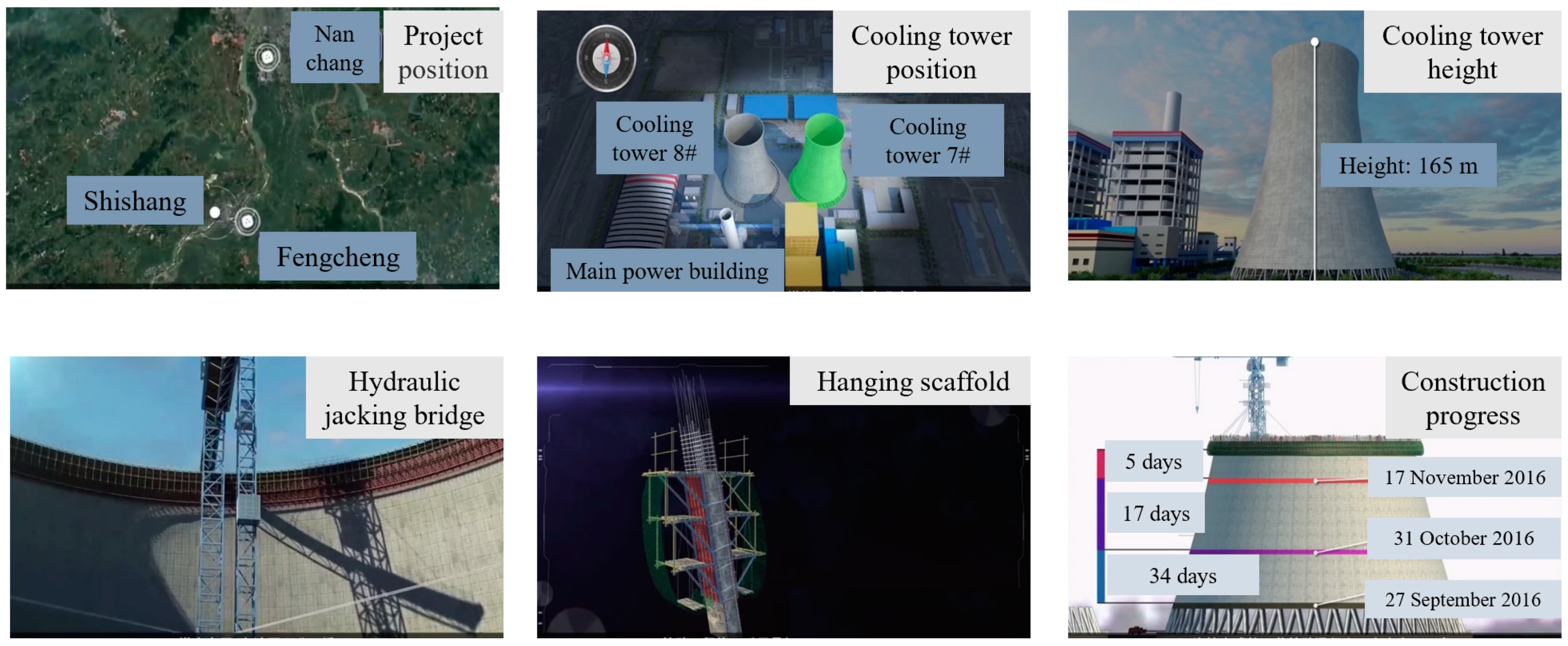

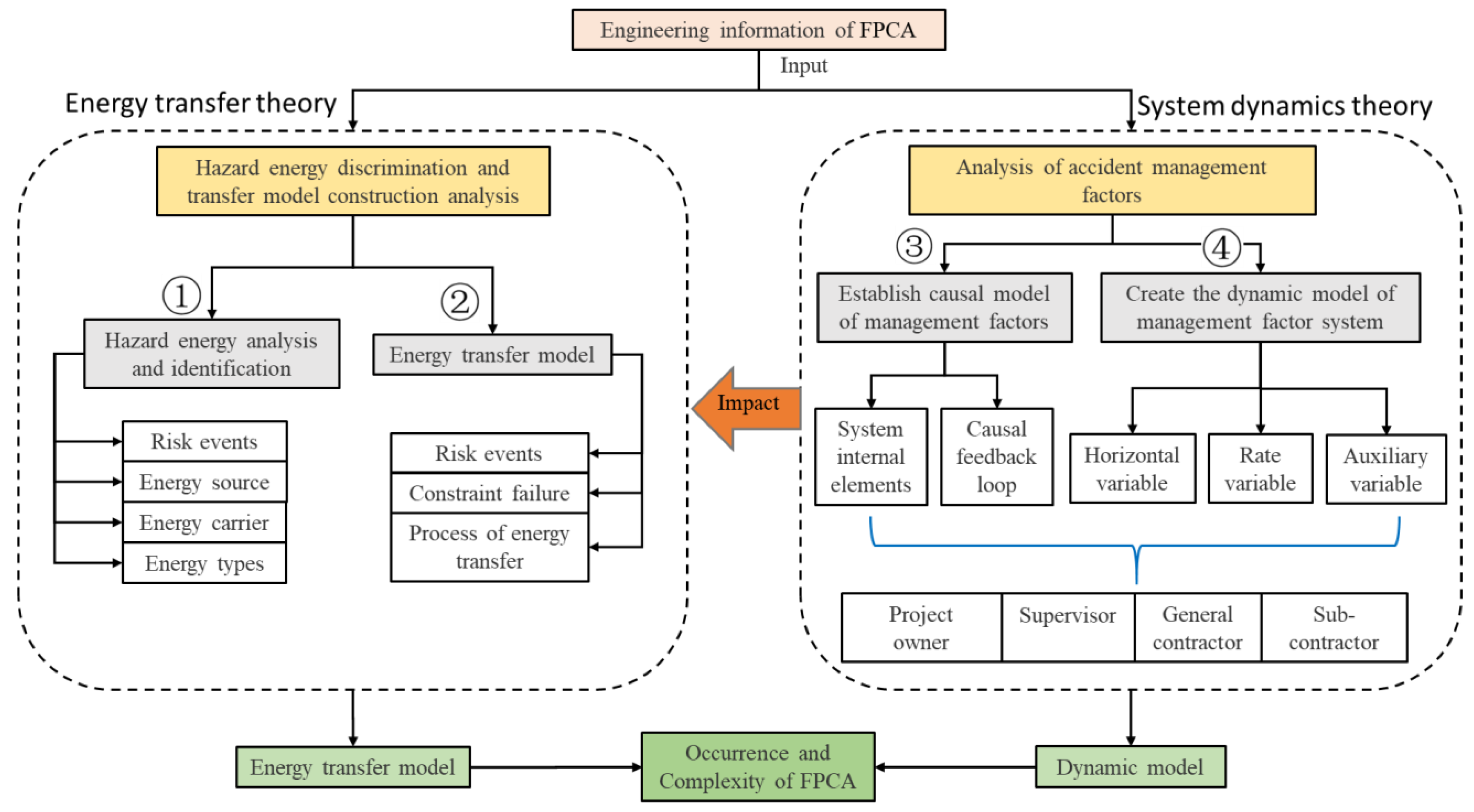
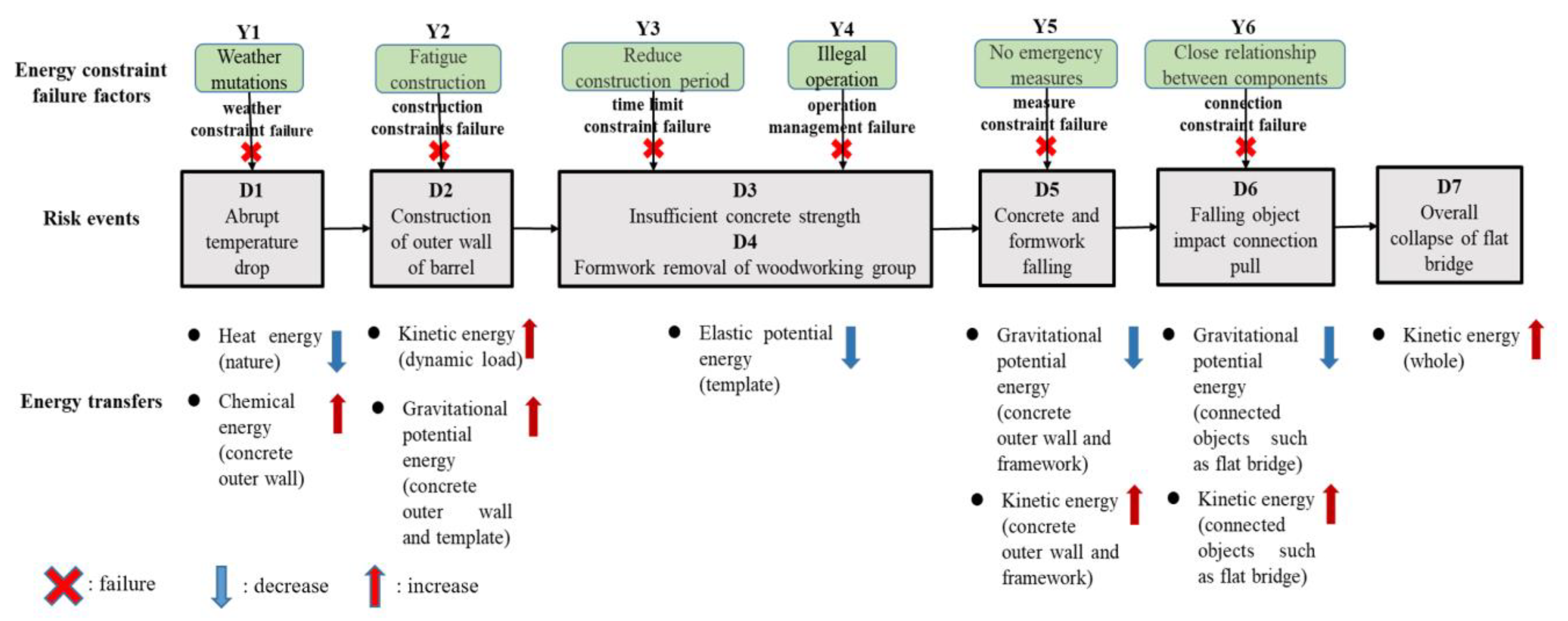

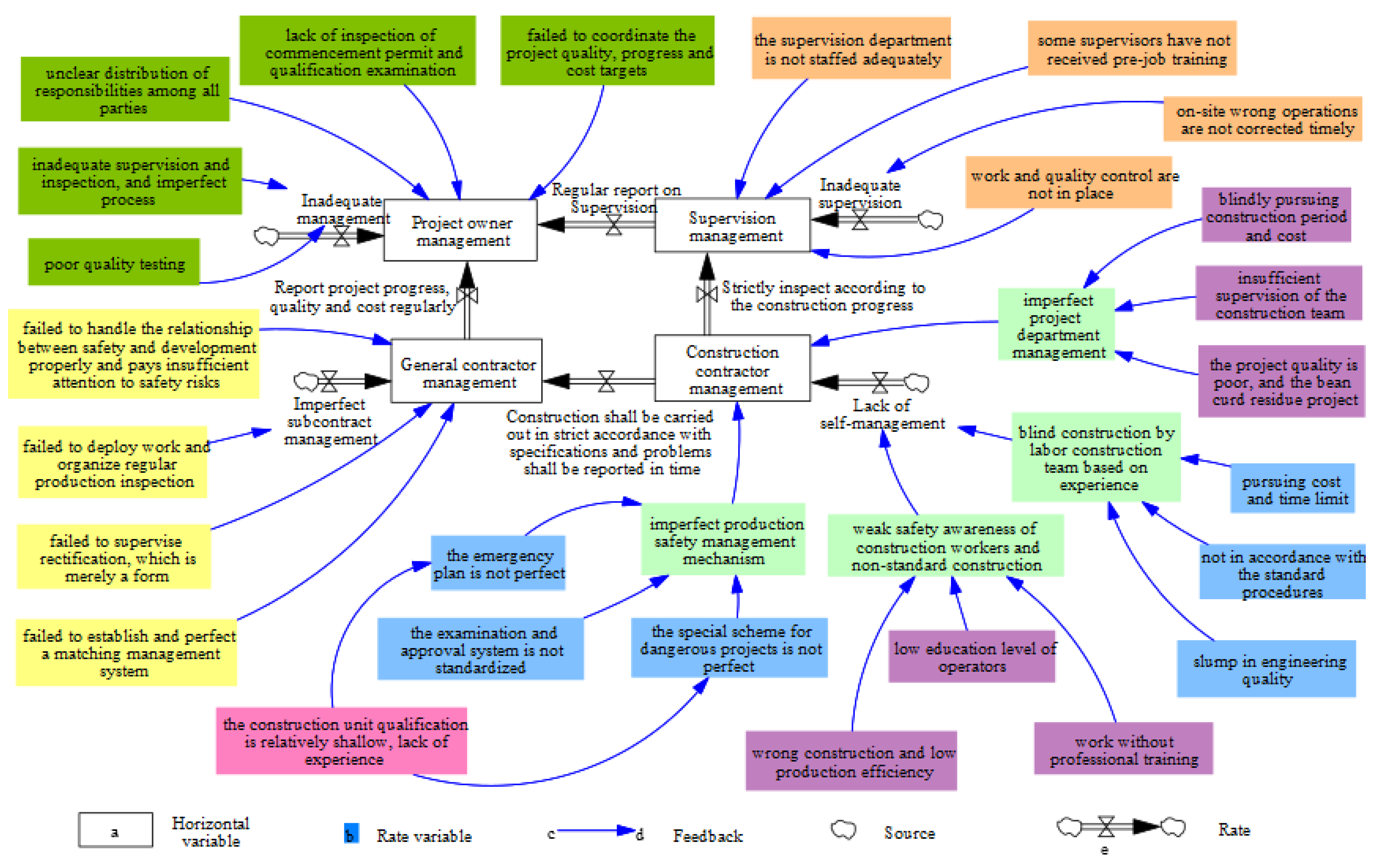
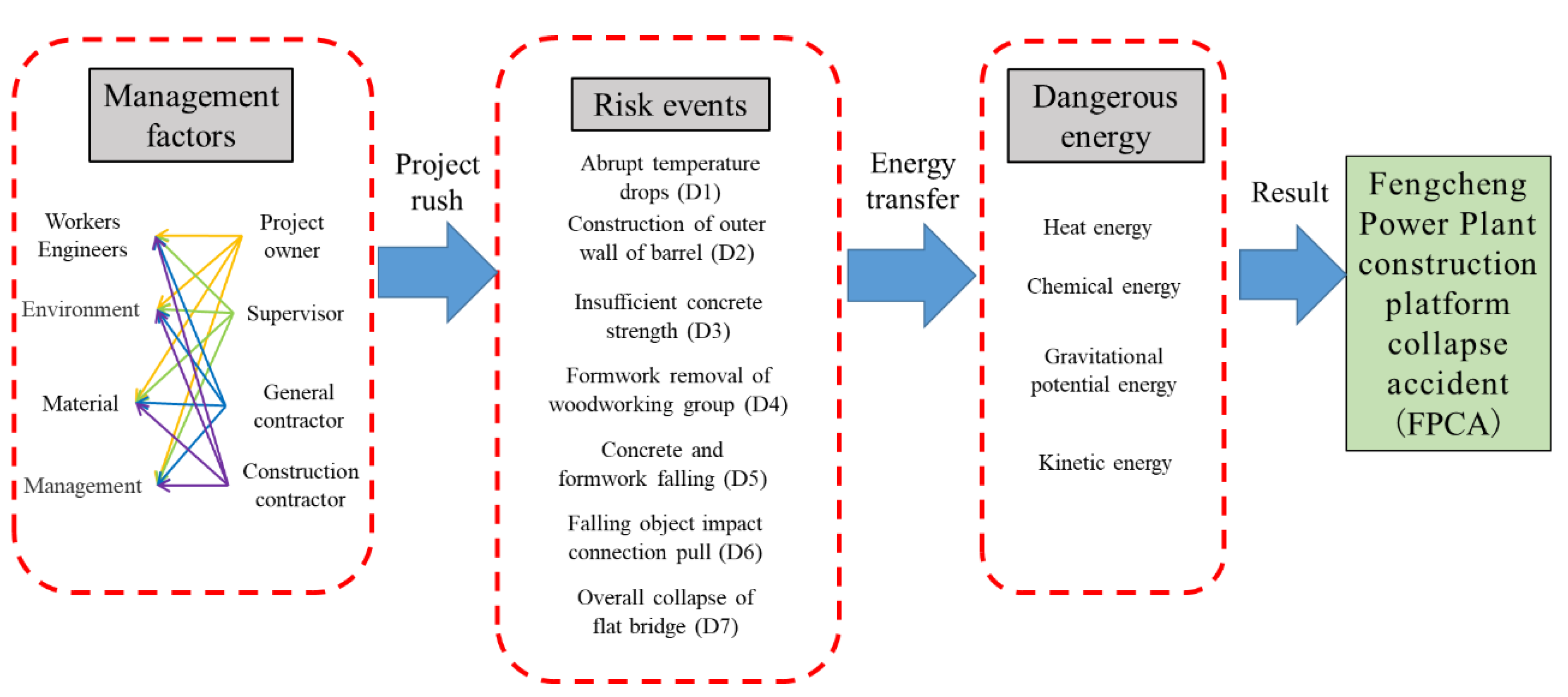
| No. | Method | Application Examples |
|---|---|---|
| 1 | Deep learning | Computer vision for identifying unsafe behavior and work conditions [4] Identification of the most dangerous risk combinations [5] Examination of the relationship between causal variables [8] Discussion on the complexity of subway construction accident networks [9] |
| 2 | Building information modeling (BIM) | A BIM-based hazard recognition and evaluation methodology [7] |
| 3 | Computer simulation | Examination of the relationships between different safety leaderships [10] |
| 4 | Systems science | Knowledge dynamics-integrated map [6] Interpretative structural model [11] Accident causality theory [12] |
| 5 | Energy transfer theory | Identifying energy sources and analyzing invalidation of energy restraints in accidents [13] |
| 6 | System dynamics (SD) | Analysis of intervention strategies for unsafe behaviors [14] |
| Phase | Process Description | Risk Events |
|---|---|---|
| The first stage | In the case of an abrupt temperature drop, the construction unit rushed to complete the task, resulting in the lack of strength of the section 50 concrete of cooling tower No. 7. | Abrupt temperature drop (D1); Construction of outer wall of barrel (D2); insufficient concrete strength (D3) |
| The second stage | The construction adopts the hanging scaffold formwork turning over the process. The labor team decides to dismantle 50 formworks by themselves, resulting in the continuous collapse of the concrete and formwork system of more than 50 cylinder walls. | Formwork removal of woodworking group (D4); concrete and formwork falling (D5) |
| The third stage | The falling object impinges on the attached zipper of the flat bridge connected with the inside of the cylinder wall, causing the whole flat bridge to collapse. | Falling object impact connection pull (D6); overall collapse of flat bridge (D7) |
| Risk Events | Production and Storage of Energy | Energy Source | Energy Types |
|---|---|---|---|
| Abrupt temperature drops (D1) | Nature, concrete | Temperature | Heat energy, chemical energy |
| Construction of outer wall of barrel (D2) | Concrete, formwork | Material, load | Gravitational potential energy, kinetic energy |
| Insufficient concrete strength (D3) and formwork removal of woodworking group (D4) | Formwork, concrete | Material, strength | Elastic potential energy |
| Concrete and formwork falling (D5) | Concrete, formwork, scaffolding | Material, load | Gravitational potential energy, kinetic energy |
| Falling object impact connection pull (D6) | Falling objects, zips | Object, load | Gravitational potential energy, kinetic energy |
| Overall collapse of flat bridge (D7) | Flat bridge | Object, load | Kinetic energy |
Publisher’s Note: MDPI stays neutral with regard to jurisdictional claims in published maps and institutional affiliations. |
© 2022 by the authors. Licensee MDPI, Basel, Switzerland. This article is an open access article distributed under the terms and conditions of the Creative Commons Attribution (CC BY) license (https://creativecommons.org/licenses/by/4.0/).
Share and Cite
Zhang, Y.; Xing, X.; Antwi-Afari, M.F.; Wu, M. Safety Risk Estimation of Construction Project Based on Energy Transfer Model and System Dynamics: A Case Study of Collapse Accident in China. Int. J. Environ. Res. Public Health 2022, 19, 14386. https://doi.org/10.3390/ijerph192114386
Zhang Y, Xing X, Antwi-Afari MF, Wu M. Safety Risk Estimation of Construction Project Based on Energy Transfer Model and System Dynamics: A Case Study of Collapse Accident in China. International Journal of Environmental Research and Public Health. 2022; 19(21):14386. https://doi.org/10.3390/ijerph192114386
Chicago/Turabian StyleZhang, Yongcheng, Xuejiao Xing, Maxwell Fordjour Antwi-Afari, and Mingqing Wu. 2022. "Safety Risk Estimation of Construction Project Based on Energy Transfer Model and System Dynamics: A Case Study of Collapse Accident in China" International Journal of Environmental Research and Public Health 19, no. 21: 14386. https://doi.org/10.3390/ijerph192114386
APA StyleZhang, Y., Xing, X., Antwi-Afari, M. F., & Wu, M. (2022). Safety Risk Estimation of Construction Project Based on Energy Transfer Model and System Dynamics: A Case Study of Collapse Accident in China. International Journal of Environmental Research and Public Health, 19(21), 14386. https://doi.org/10.3390/ijerph192114386









